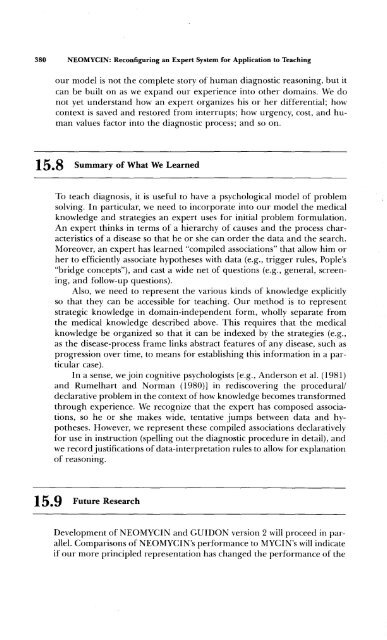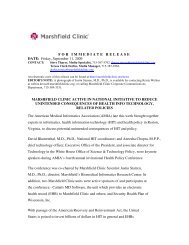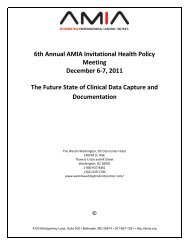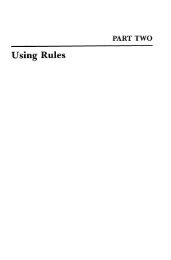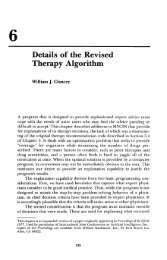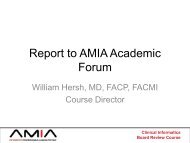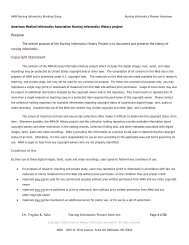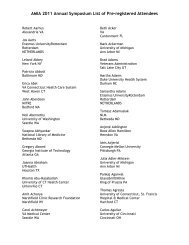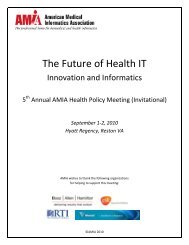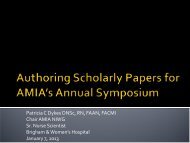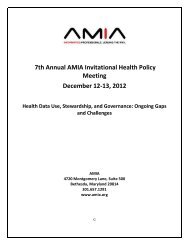Chapter 15 - People
Chapter 15 - People
Chapter 15 - People
Create successful ePaper yourself
Turn your PDF publications into a flip-book with our unique Google optimized e-Paper software.
380 NEOMYCIN: Reconfiguring an Expert System for Application to Teachingour model is not the complete story of human diagnostic reasoning, but itcan be built on as we expand our experience into other domains. We donot yet understand how an expert organizes his or her differential; howcontext is saved and restored from interrupts; how urgency, cost, and humanvalues factor into the diagnostic process; and so on.<strong>15</strong>.8 Summary of What We LearnedTo teach diagnosis, it is useful to have a psychological model of problemsolving. In particular, we need to incorporate into our model the medicalknowledge and strategies an expert uses for initial problem formulation.An expert thinks in terms of a hierarchy of causes and the process characteristicsof a disease so that he or she can order the data and the search.Moreover, an expert has learned "compiled associations" that allow him orher to efficiently associate hypotheses with data (e.g., trigger rules, Pople's"bridge concepts"), and cast a wide net of questions (e.g., general, screening,and follow-up questions).Also, we need to represent the various kinds of knowledge explicitlyso that they can be accessible for teaching. Our method is to representstrategic knowledge in domain-independent form, wholly separate fromthe medical knowledge described above. This requires that the medicalknowledge be organized so that it can be indexed by the strategies (e.g.,as the disease-process frame links abstract features of any disease, such asprogression over time, to means for establishing this information in a particularcase).In a sense, we join cognitive psychologists [e.g., Anderson et al. (1981)and Rumelhart and Norman (1980)] in rediscovering the procedural!declarative problem in the context of how knowledge becomes transformedthrough experience. We recognize that the expert has composed associations,so he or she makes wide, tentative jumps between data and hypotheses.However, we represent these compiled associations declarativelyfor use in instruction (spelling out the diagnostic procedure in detail), andwe record justifications of data-interpretation rules to allow for explanationof reasoning.<strong>15</strong> • 9Future ResearchDevelopment of NEOMYCIN and GUIDON version 2 will proceed in parallel.Comparisons of NEOMYCIN's performance to MYCIN's will indicateif our more principled representation has changed the performance of the


